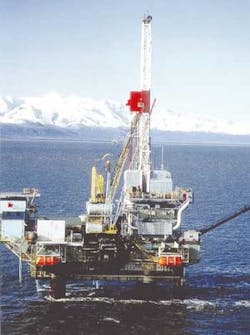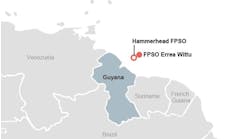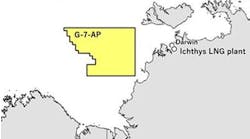Oil and gas production flexibility with geographically separate controls
Alain Y. Zucco
Honeywell Industry Solutions
With today's need for tapping new oil and gas sources in harsher environments, such as remote fields or in water depths exceeding 5,000 ft, flexible control system technologies are required.
A remote, shallow-water offshore oil prod-uction facility may have one, two, or more wellhead platforms, one crude oil separation and processing plant, re-injection facilities, a living quarters platform, and a floating storage and offloading vessel (FSO) to store and export the oil, with distances between each component of 0.5 to 20 km or more.
If it is in deeper water, a semisubmersible platform or TLP interfaced to subsea systems may be used, with a separate FSO for oil export, or an FPSO, depending on water depth, lifecycle costs, and environmental conditions.
All these facilities need flexible and powerful control systems at several distinct geographic locations. Ideally, full control of any equipment anywhere should be available from any location in case of bad weather or a process incident.
Thousands of kilometers away, the headquarters do not need remote control, but they need full remote monitoring – ideally of all parameters operations staff can see locally.
In the past, a central control system location on a platform or onshore was used, with custom interfaces to separate and sometimes different remote control systems. Performance limitations restricted data exchange and monitoring to the essential variables and alarms, and no remote control was possible. Headquarters received only summary reports, without detailed information to investigate incidents or production problems.
In today's cost-cutting environment, a maximum amount of remote locations is technically designed, from the beginning, to be unmanned, with remote control from a central facility. But when operators or maintenance personnel are sent to the remote facility to resolve a problem, they want to see, if technically possible, exactly the same on local screens as in the central facility. So, the demand on control systems is to offer "parallel identical operations" from several sites at good performance levels and with minimal engineering costs and database duplications.
null
Honeywell's Experion PKS control system with distributed systems architecture (DSA) provides a flexible solution. DSA is the ideal solution for integrating processes when there are multiple control rooms and geographically distributed sites, which may or may not have their own locally connected controllers.
DSA enables seamless global access to points, alarms, interactive operator control messages, and history across Experion PKS systems without costly, error-prone, performance- and functionality-limiting database duplication:
- Global real time data access for control of local or remote loops
- Trending of real time and historical system-wide data, on a single trend, including remote point historical data retrieval from the remote server in real time
- Global alarming and global system messages.
The system's alarm summary shows a consolidated list of local and remote alarms. The remote alarms displayed to an operator are those from the remote areas for which alarms are enabled on the local server, and which have been assigned to the station or operator. Local and remote alarms can be filtered in the same way. The station alarm zone shows the highest priority unacknowledged alarm, regardless of whether it is a local or remote alarm.
An operator can navigate directly to an associated or point detail display for a remote alarm, just as for a local alarm. In this way, multiple Experion PKS systems can operate as a single system. Previously, this level of integration could only be implemented within the limits of a single distributed control system (DCS) installation.
DSA adjusts to changing user and application demands for information. Point data, alarms, and operator messages are delivered only to current subscribers and then only when there is a change in status. There is no polling in the DSA architecture, no transmission of data to systems that aren't currently subscribing to it, and no transmission of redundant unchanged data to systems that are subscribing.
This process improves in performance of network and system loading. Transfers of information happen between clusters of interested users, rather than between individual users. This allows DSA to deliver DCS-type integration among Experion PKS systems, within a coherent global security scheme, with absolutely no duplicate databases or redundant engineering of any kind.
The Experion PKS redundancy subsystem provides a high availability platform by enabling a pair of similarly configured servers to support each other in a primary/backup fashion. Should the primary fail, a fully functioning backup assumes the primary role. Primary refers to the specific server that is actively acquiring data from the controllers or remote termination units and serving data to the clients. The primary propagates all database transactions to the backup over a redundant network so both databases remain in complete synchronization.
The backup server takes over from the primary server under the following conditions:
- The primary server hardware fails and the backup cannot communicate with it
- All network links between the primary and backup servers are broken
- The primary loses controller communications
- A user does a manual fail-over test.
In addition to synchronizing necessary database files, the redundancy subsystem is capable of automatically copying user files from the primary server to the backup. Files such as custom displays, application source files, and history archives are copied every 60 min by default if they have changed since the last synchronization.
Full access to summary and detailed infor-mation is provided anywhere in the world by PCs connected to the Experion PKS eServer.




